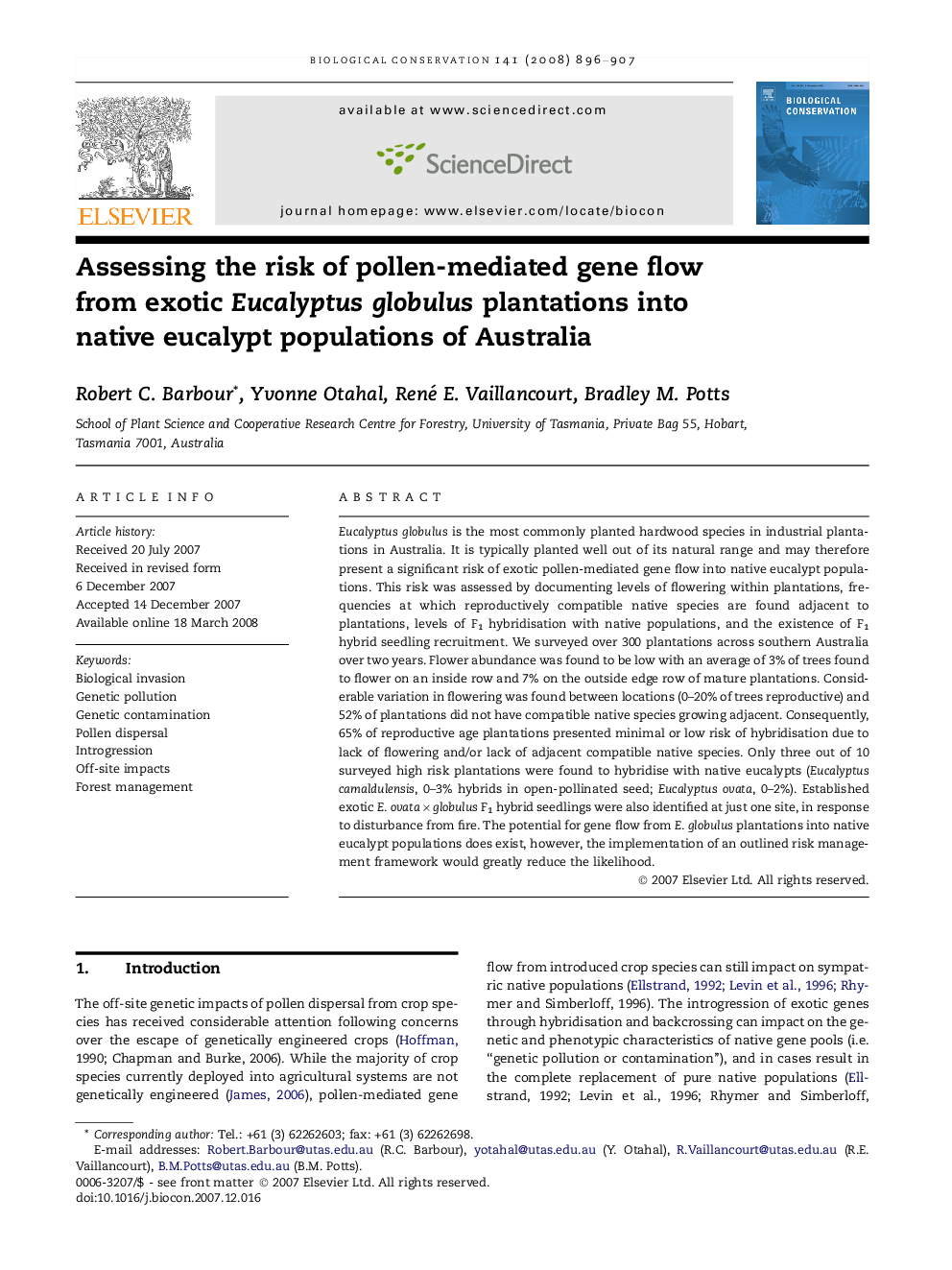| Article ID | Journal | Published Year | Pages | File Type |
|---|---|---|---|---|
| 4386685 | Biological Conservation | 2008 | 12 Pages |
Abstract
Eucalyptus globulus is the most commonly planted hardwood species in industrial plantations in Australia. It is typically planted well out of its natural range and may therefore present a significant risk of exotic pollen-mediated gene flow into native eucalypt populations. This risk was assessed by documenting levels of flowering within plantations, frequencies at which reproductively compatible native species are found adjacent to plantations, levels of F1 hybridisation with native populations, and the existence of F1 hybrid seedling recruitment. We surveyed over 300 plantations across southern Australia over two years. Flower abundance was found to be low with an average of 3% of trees found to flower on an inside row and 7% on the outside edge row of mature plantations. Considerable variation in flowering was found between locations (0-20% of trees reproductive) and 52% of plantations did not have compatible native species growing adjacent. Consequently, 65% of reproductive age plantations presented minimal or low risk of hybridisation due to lack of flowering and/or lack of adjacent compatible native species. Only three out of 10 surveyed high risk plantations were found to hybridise with native eucalypts (Eucalyptus camaldulensis, 0-3% hybrids in open-pollinated seed; Eucalyptus ovata, 0-2%). Established exotic E. ovata Ã globulus F1 hybrid seedlings were also identified at just one site, in response to disturbance from fire. The potential for gene flow from E. globulus plantations into native eucalypt populations does exist, however, the implementation of an outlined risk management framework would greatly reduce the likelihood.
Keywords
Related Topics
Life Sciences
Agricultural and Biological Sciences
Ecology, Evolution, Behavior and Systematics
Authors
Robert C. Barbour, Yvonne Otahal, René E. Vaillancourt, Bradley M. Potts,
